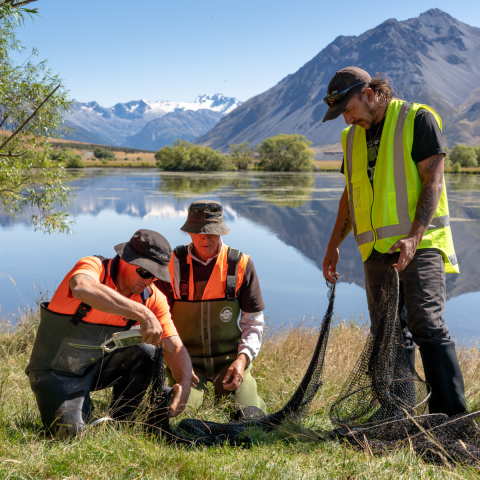The New Zealand native longfin eel, also known to Māori as ‘ tuna’, is one of the largest and longest-living freshwater eels in the world.
In order to spawn, longfin tuna migrate to deep-sea trenches in the Pacific Ocean, up to 6,000 kilometres off our coastline. They release millions of eggs, and their offspring float back to the New Zealand coast on ocean currents. The elver (young tuna) then swim upstream to live in freshwater rivers and lakes. One of the major obstacles that tuna and elvers face on this journey is man-made structures such as dams.
The Waiau and the Waitaki catchments are the natural habitat of thousands of native tuna, and building and operating dams in these areas has had impacts on their migratory habits. Meridian and Ngāi Tahu consider the tuna population a key indicator of the quality of these waterways.
As the tangata whenua of the area, Ngāi Tahu has historically relied on a healthy tuna population for mahinga kai. We recognise the cultural importance of eel to Ngāi Tahu and work with them closely to ensure the protection of the species and ensure that this taonga (treasure) is preserved for many generations to come.
To provide a sustainable population of eel in the Waiau and Waitaki catchments, we move thousands of tuna each year by trapping and transferring the elver into dam headwaters and migrating adults back downstream. These processes involve Ngāi Tahu and other local stakeholders in overseeing and delivering the trap and transfer programme.
